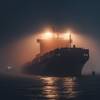Wrecks of the World: Hidden Risks of the Deep
The American Salvage Association (ASA), supported by the Association of Diving Contractors International (ADCI), International Salvage Union (ISU), Marine Technology Society (MTS), Maritime Law Association of the United States (MLA), North American Marine Environmental Protection Association (NAMEPA), Spill Control Association of America (SCAA), Maritime Technology Alliance (MTA), and the World Ocean Council (WOC), will sponsor a conference, “Wrecks of the World: Hidden Risks of the Deep (WOW)” on Wednesday, September 9, 2009 at the Maritime Institute of Technology and Graduate Studies (MITAGS) in the Washington, DC area (Linthicum Heights, MD) USA. The conference, part of the ASA-supported Wreck Oil Removal Program (WORP), will explore the myriad issues (pollution threat, impact modeling, risk assessment, oil removal and remediation, implications to the environment, legal, insurance and funding issues, next steps) related to the more than 8,500 sunken vessels in the world, many of them World War II-era.
By way of background, these wrecks may contain as much as 20 million tons of oil and other hazardous materials. Sporadic or continuous leakages or potential sudden massive spillages from these wrecks pose a continual risk across the globe. The problem of potentially-polluting wrecks has long been discussed and recent incidents around the world have caused government agencies and responsible parties to look proactively at preventing catastrophic oil and other chemical releases from long submerged shipwrecks.
The risk of oil and other hazardous materials seeping out of sunken shipwrecks is growing yearly, and the likelihood of leakage or even a massive spill occurring increases, as do the potential costs. Taking a proactive rather than a reactive approach to mitigating this risk will save not only dollars in response costs, but also reduce the threat of environmental and socioeconomic damages.
From the viewpoint of environmental and economic impacts, there is little difference between oil spilling from a sunken vessel and oil spilling from a modern day vessel casualty, with the exception that, while there is no way to predict the location or timing of the next major oil spill, potentially-polluting wreck sites are known and the probability of a spill event is quantifiable or even inevitable. There is ample evidence that there are a large number of wrecks in U.S. coastal waters that are spills waiting to happen.
Responses to continuous oil leakage episodes that appear as “mystery spills” or to a massive oil release from one or more of these wrecks will cost hundreds of millions of dollars, probably significantly more. The response costs and damages will be significantly greater when the responses occur on a reactive basis than the costs that would be associated with planned and controlled proac.ve oil removal operations. Implementing WORP will mitigate damage and costs before there is an emergency and the oil is in the water and on shorelines.
To register http://www.americansalvage.org/forms/wow.htm










